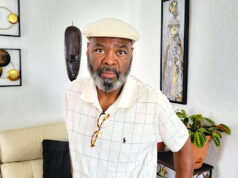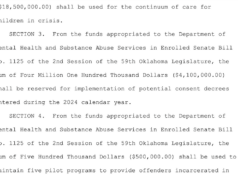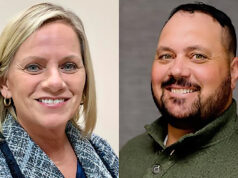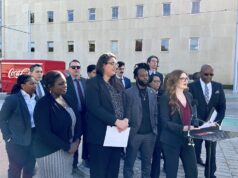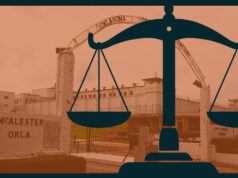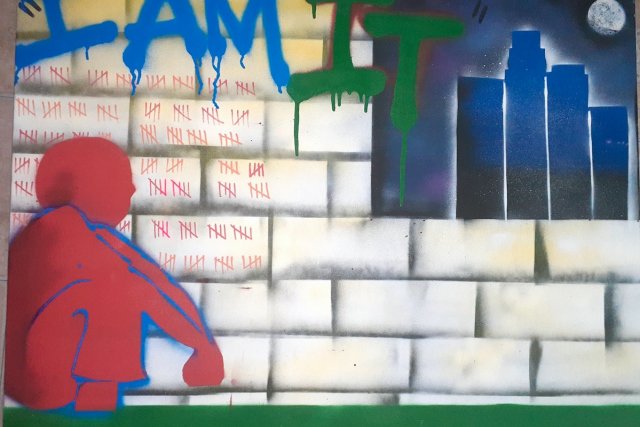
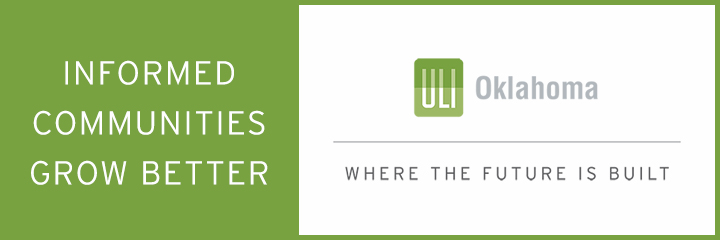
By Daja E. Henry, Patrick Linehan, Gabriela Szymanowska, Chloe Jones and Brody Ford | News21
Black students were suspended from school 3.5 times more often than white students during the 2018-19 school year, according to a News21 analysis of 11 sample states and New York City, which collectively serve about half of all U.S. students.
Despite making up just 15 percent of the sample student population, Black students received 32 percent of the 1.6 million suspensions analyzed by News21.
Decades of issuing harsher punishments, including suspensions and expulsions, in the name of school safety has accelerated the flow of kids out of primary and secondary schools and into detention centers and prisons, often referred to as the school-to-prison pipeline.
School resource officers, sworn law enforcement hired to protect schools from outside threats, also escalate minor disciplinary infractions with arrests, justice advocates say.
In addition to routine discipline, school resource officers have been involved in incidents ranging from unnecessary use of force to accidental discharge of a weapon. News21 identified at least 31 such incidents over the past five years in 19 states.
Advocates say these practices are fueled by school biases that push children of color and children with disabilities into the juvenile justice system more than anyone else.
More than police: How the school-to-prison pipeline really works from News21 on Vimeo.
His ankle monitor, which he was required to wear because of chronic absenteeism, showed he had skipped class a few hours before, violating his probation for a host of school infractions.
“I was just concerned, like, if my parents were going to know, you know?” Xuncax recalled. “Cause my mind’s like, ‘Damn, like, if I’m going to jail today, like, that means I’m not going to go home tonight.’”
That was the first time Xuncax was booked into a juvenile detention facility, but he later spent time in two other California lockups. He was just one of hundreds of thousands of kids who enter the juvenile justice system every year from a place meant to be trusted – their schools.
In 2015-16, the ACLU found that 1.7 million students attended schools with cops but no counselors, 10 million students attended schools with cops but no social workers, 6 million students attended school with cops but no psychologists, and 3 million students attended schools with cops but no nurses.
“Students don’t drop out, not as many as people think,” said Amir Whitaker, an author of that report. “Many of them are pushed out, either through policies or practices that make them no longer feel welcome or the barriers that the school creates themselves.”
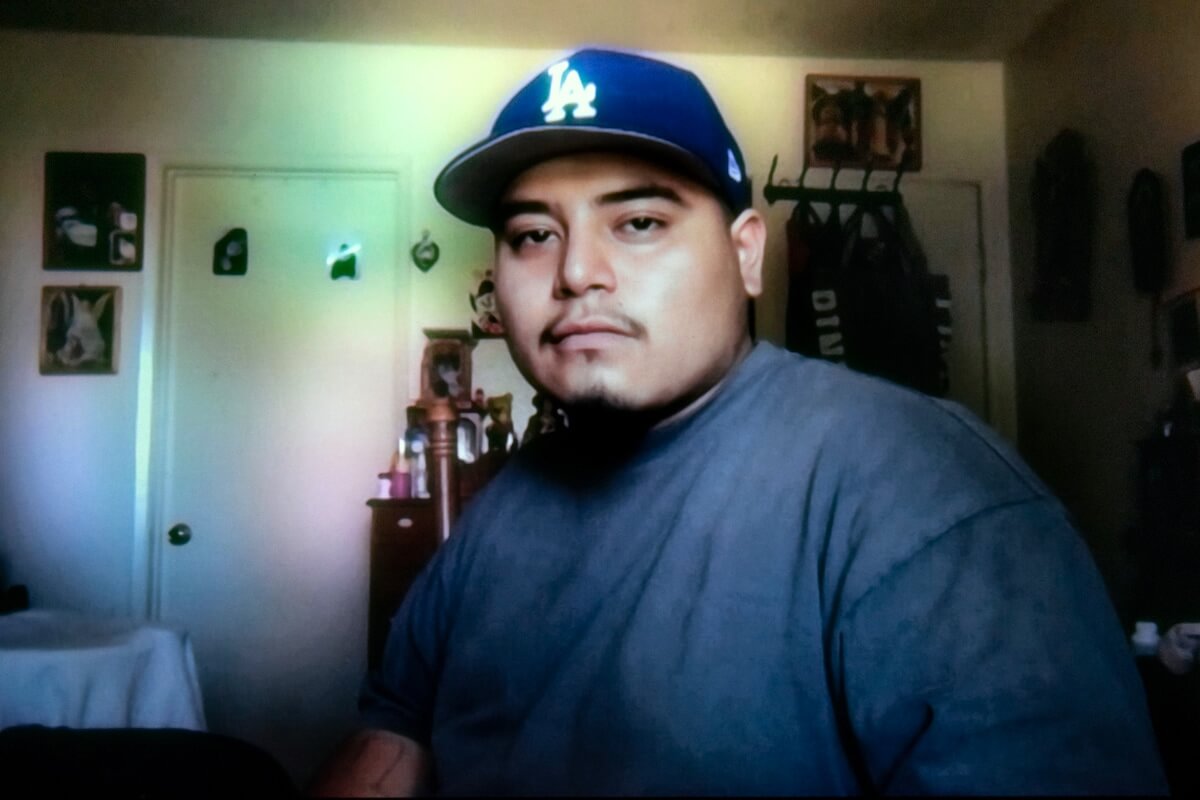
Xuncax, now 19 and working for the Arts for Incarcerated Youth Network in Los Angeles, said he was first suspended in the third grade. When he returned to San Pedro Street Elementary School, he felt unwelcome.
“After that, (teachers) just started looking at me … like if I was going to rob them,” he recalled.
A few days after returning, he was expelled again for shouting an expletive at a teacher.
A 2018 study by State University of New York Downstate Medical Center found that after 12 years, adults who were suspended from school are 23% more likely to be in prison than their peers who were not – even when accounting for race, class and other factors.
More than 2.5 million U.S. children were suspended during the 2015-16 school year, according to the most recent national data from the federal Department of Education. Collectively, they missed more than 11 million days of school, data showed.
A biased system
Even before a suspension is issued, pervasive bias can shape the way teachers and school officials treat students, and advocates say this bias shows up as early as preschool. A 2016 Yale University study found that preschool teachers expecting disruptive behavior watched Black students longer than non-Black students.
In schools with higher percentages of low-income students and students of color – where most school-based arrests occur – there is a significant disconnect between students and their teachers. According to data from the Department of Education, their teachers are mostly white and female.
“A lack of cultural synchrony, in my opinion, is what really contributes to the discipline disparity that we see, teachers misunderstanding, misinterpreting the behaviors of children that are really benign and innocent … because they’re operating off of these stereotypes, these negative stereotypes,” said Jamilia Blake, an associate professor of educational psychology at Texas A&M University.
According to a 2016 study in the Emory Law Journal, majority non-white schools are more likely to use stricter surveillance, including metal detectors and random searches, creating punitive environments that researchers liken to prisons. The study says surveillance creates a dysfunctional learning environment and pushes students out of schools.
“It’s like the school wants you to be a criminal before they even know what a criminal is,” said Tiqua Johnson, whose daughter was arrested last year after a scuffle at her middle school in Pawtucket, Rhode Island.
Christina Beeler had taught two years at Northbrook High School in Houston, Texas, when she noticed her students facing harsher discipline for minor infractions. She quit, became a school discipline attorney, and says she is now the only lawyer in Texas dedicated solely to representing students at disciplinary hearings.
In Texas, 73 percent of all disciplinary actions during the 2018-19 school year occurred after a student violated the local code of conduct, according to data from the Texas Education Agency. Nationally, disorderly conduct is a common disciplinary charge, advocates say.
“All these vague discipline policies allow for a lot of discretion to be on adults who are already overworked, who probably are underpaid … who may or may not actually know that they have some internalized racism to deal with,” said Maria Fernandez, a senior campaign strategist at the Advancement Project, a civil rights organization in Washington, D.C.
Vanessa McCullers, executive director of Mothers of Black Boys United, a New York advocacy group, said unchecked bias can cause problems that follow students for the rest of their lives.
“A teacher who is not properly trained in how to recognize her own unconscious or his own unconscious biases may target (the student), may put a spotlight on his negative behavior that allows the other children in the classroom to look at him as a problem,” she said.
After his third grade expulsion, Xuncax said, he could tell teachers and administrators at his new school thought he was bad.
“Anti-bias education needs to be for everyone because we’ve all been socialized in the same system of white supremacy,” said Tiffanie Harrison, a teacher at Round Rock High School in Texas. “So even as a Black educator, I’ve really had to unlearn and relearn a lot of things.”
Rosemarie Allen, a social justice and early childhood development educator, said disproportionate discipline toward students in underserved communities could be equally detrimental to white students.
“In every classroom, there are future doctors and future police officers and future judges,” she said. “If they’re learning in first grade and kindergarten that Black and brown kids are bad and they’re in trouble all the time and they’re dispensable and can be kicked out, then we set that stage very early for police abuse, for inequities in health care, for inequities in judicial systems.”
Advocates dedicated to dismantling the school-to-prison pipeline are calling for a paradigm shift that redefines a school’s function as an arm of society.
“Schools should be a reflection of the society that we want to live in, so the values that we say we want as a society should be actually implemented in schools,” Fernandez said. “If we have schools that are over-policed, underfunded, where they’re learning false history, where they are yelled at and told to walk in a line and have to go through metal detectors, then that is what we say our society values.”
Some children excluded
A 2019 report from the U.S. Commission for Civil Rights found that students of color do not misbehave at higher rates than their white peers, but they receive harsher and longer punishments in school.
In Texas, where Christina Beeler works as a school disciplinary attorney, 32% of suspensions during the 2018-19 school year were levied against Black students, who make up just 13% of the school population, data from the Texas Education Agency showed.
The explosion of suspensions and expulsions can be traced to zero-tolerance discipline policies that began with the federal Gun-Free Schools Act in 1994, which mandated every public school expel for one year any student found with a gun on campus. The national policy paved the way for states to enact laws to suspend and expel students for drugs, violence and other misbehavior, the commission’s report said.
“The same things are happening over and over and over and over again,” Beeler said. “And I am just a Band-Aid on a much larger issue.”
Kids policed
In Mainor Xuncax’s case, school discipline escalated to police arrest.
The Los Angeles School Police Department is the largest independent school police department in the U.S. With more than 545 officers and staff members, it rivals the size of many police forces in midsize cities.
In the 2015-16 school year, 290,600 school incidents like Xuncax’s led to contact with law enforcement, including citations and arrests, according to data by the Department of Education. These incidents range from bringing a weapon to school, fighting and disruptive behavior.
Advocates say temper tantrums, skipping class and similar offenses more likely result in arrests if school resource officers – known as SROs – are on campus.
Michael Blanchette was in high school in 2018 when his school resource officer in Narragansett, Rhode Island, tackled and held him on the ground for six minutes after Blanchette stuck his middle finger out. Blanchette’s individualized education plan allowed him to walk the hallways to relieve anxiety, but the SRO had told him to get to class.
Surveillance video: Michael Blanchette from News21 on Vimeo. (Video courtesy of Amato DeLuca)
Blanchette was arrested for disorderly conduct and resisting arrest, and suspended from school for five days, according to the lawsuit he filed this spring with the ACLU of Rhode Island.
His lawyer, Amato DeLuca, said the damages to his client extend far beyond the day of the incident.
“The damages are the humiliation,” DeLuca said. “The embarrassment of being arrested, having to go through the system, the criminal justice system, the emotional distress.”
Criticisms of school policing are not new. One 2019 study done at the University of Texas, Austin linked school police funding with a 2.5% decrease in high school graduation rates and a 4% decrease in college enrollment rates.
Still, school resource officers continued to be hired, especially after the 1999 massacre at Columbine High School in Colorado. During the 2017-18 school year, 70% of high schools had at least a part time school resource officer, according to the School Survey on Crime and Safety, a national survey by the Department of Education.
The Justice Department has awarded more than $200 million to school districts to hire officers in the past decade, nearly $50 million of which was awarded in 2020. New York City alone received more than $11 million to hire 100 new school resource officers this year.
The DOJ requires that officers hired using that grant money are trained by the National Association of School Resource Officers (NASRO), but officers hired outside that program are not held to the same standards. A report from Georgetown Law School found that 31 states do not require child-specific training for SROs.
“The problem, as we’ve seen, is you put a police officer in a school, you don’t give them the training they need and they are going to act like police rather than as people in a school trying to provide assistance,” said Steven Brown, director of the ACLU of Rhode Island, who has brought lawsuits against two school resource officers this year.
Mo Canady, executive director of NASRO, said the presence of well-trained school resource officers can lower, rather than raise, the number of students criminally charged.
“I am not sure who it is that’s feeding the school-to-prison pipeline to the level that it’s being described,” he said, “but it’s not us. It’s not our members.”
His association trained more than 10,000 school resource officers in 2019, Canady said, adding that he’s never seen a misconduct incident by an officer trained by NASRO.
However, the association could not confirm or deny it had trained the officers involved in the 31 incidents identified by News21. It did confirm that half of the incidents occurred in districts where the group has conducted training.
Since the nationwide calls for racial justice in the wake of George Floyd’s death May 25 at the hands of Minneapolis police, at least six school districts have committed to removing police officers from their campuses.
Kids traumatized
Tre’sur Johnson was 13 when she was arrested and “perp-walked” through her Rhode Island middle school after a fight. Her mother, Tiqua Johnson, said the school officer told her he wanted to “make an example” out of Tre’sur.
Another student, a white student, had instigated the fight. Tre’sur, who is Black, defended herself. The fight lasted less than 60 seconds and ended when other students broke it up, despite a school administrator standing less than 10 feet away, according to a lawsuit filed with the ACLU of Rhode Island.
At the time, Tre’sur was on the honor roll at Goff Junior High School in Pawtucket. She had never had an issue at school before.
The charges eventually were dismissed on the condition that Tre’sur write an essay on the scuffle, Tiqua Johnson said.
“She’s scared to death of the cops,” the mother said. “I know someone who became a cop recently that I grew up with, and she won’t even go around them. She’s so scared.”
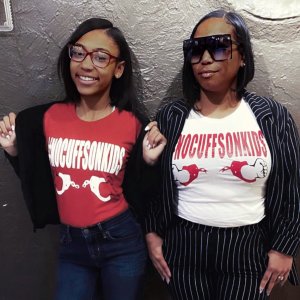
Tre’sur was anxious about returning to that school, and when she did go back, her mother said, “it was like she was a bad kid, everyone was bringing it up every day. I had to pick up another job to be able to put my daughter in private school.”
The recommended ratio for students to school counselors is 250-to-1, but fewer than 10% of schools met this requirement in 2016, the most recent year available from the ACLU.
For social workers, the ratio is worse. In 2016, only 3,000 schools met the 250-to-1 ratio for social workers. This trend also extends to school psychologists and nurses, who could have alleviated Tre’sur’s anxiety.
Angela Mann, a school psychologist in Florida who worked on the ACLU report, said this disparity between law enforcement and mental health professionals can have a detrimental effect. Police fill the gaps left by the dearth of health professionals.
“I’m not sure, with some of the complicated histories of communities of color and the police, that they’re even necessarily the best people to be receiving that training or doing that job to begin with,” Mann said.
When combined with the cost of overtime for school safety, New York City, the nation’s largest school district, spent more than 70 times more on police in schools than on counseling services in 2017.
A possible way forward
Some school districts have recognized the negative effects of suspensions, expulsions and arrests, implementing restorative justice practices in school as a way to bypass or divert from the school-to-prison pipeline.
Restorative discipline brings together perpetrators, victims and school officials to build a solution to misbehavior. This often includes community service, helping at home and working toward positive behaviors. According to the Department of Education’s School Survey on Crime and Safety, about 42% of schools practice restorative discipline.
Bob Murphy, an independently contracted school mediator in Spokane, Washington, said restorative discipline can rehabilitate offenders and help kids stay in school.
“If you think about traditional discipline … it doesn’t really teach kids much,” he said. “You know, you do something wrong, you get suspended, you get sent home. Sometimes you want to be sent home.”
Since the superintendent of Spokane Public Schools signed a restorative discipline initiative in 2016, Murphy said, suspensions and expulsions have declined and teachers report a better learning environment.
Harrison, the teacher in Round Rock, Texas, said restorative practices don’t go far enough to erase the racial bias in schools.
“One of the basic principles of racial equity is to fix systems, not kids,” she said. “But my kids aren’t struggling because they’re bad. They’re struggling because the system’s bad.”
(Editor’s Note: Daja E. Henry and Chloe Jones are Donald W. Reynolds Foundation fellows, and Gabriela Szymanowska is a John and Patty Williams fellow. This report is part of Kids Imprisoned, a project on the juvenile justice system produced by the Carnegie Knight News21 program. For more stories, visit https://kidsimprisoned.news21.com/.)









